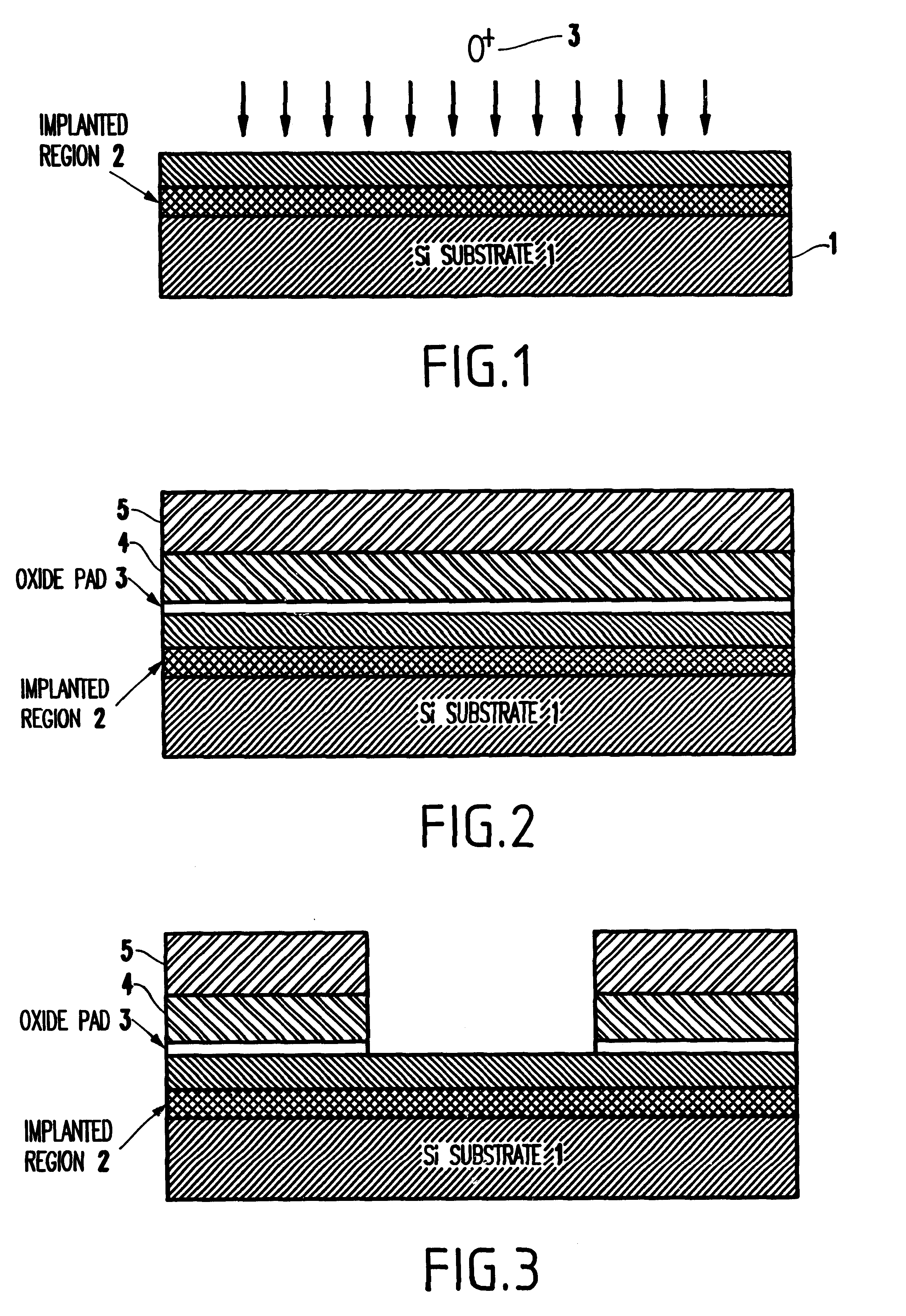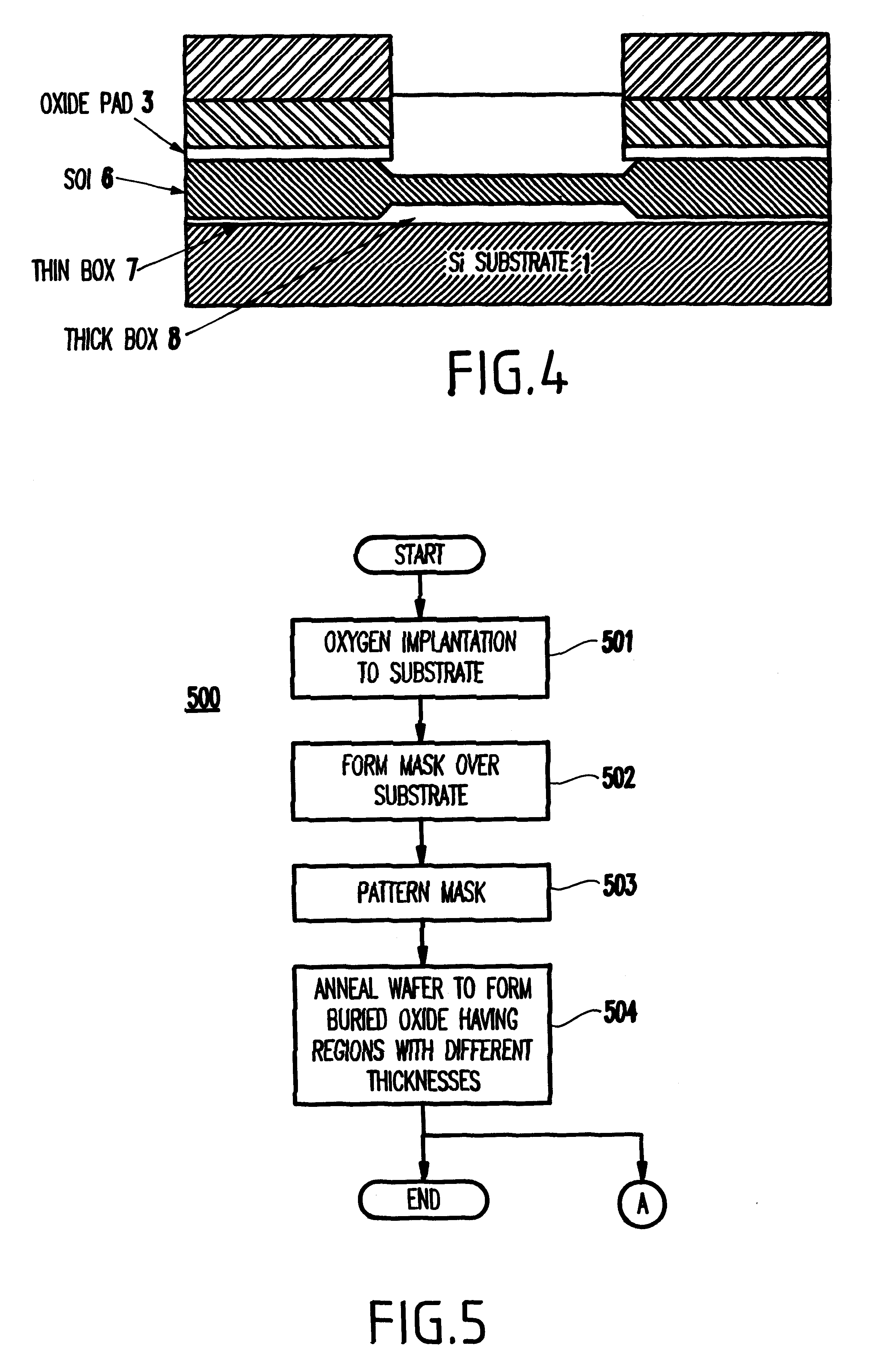Method for patterning a buried oxide thickness for a separation by implanted oxygen (simox) process
a technology of buried oxide and separation process, which is applied in the direction of semiconductor devices, electrical equipment, basic electric elements, etc., can solve the problems of high defect density, disadvantageous technique, and damage to the implanted oxide layer,
- Summary
- Abstract
- Description
- Claims
- Application Information
AI Technical Summary
Problems solved by technology
Method used
Image
Examples
first embodiment
Referring to FIGS. 1-8 and 10, a first embodiment of method for fabricating a patterned buried oxide film according to the present invention will be described below.
Referring to FIG. 1, first an implant 3 (e.g., oxygen, nitrogen to form a buried nitrogen film, or a combination thereof; for illustration purposes, oxygen will be employed as described below) is implanted into a substrate 1 (e.g., formed of silicon, silicon-germanium (SiGe) silicon carbide (SiC), etc.; for illustration purposes, a silicon substrate will be employed as described below) using an energy of about 30 KeV to about 400 KeV, and more preferably 210 KeV, and a wafer temperature of between approximately 600.degree. C. to 650.degree. C. A typical implanted oxygen dose used is in the range of 10.sup.18 cm.sup.-2, or 2.times.10.sup.17 to 4.times.10.sup.17 cm.sup.-2. Other implant energies and oxygen doses may be used depending on the desired SOI and BOX thickness. The implanted region is shown at reference numeral 2...
second embodiment
Referring to FIG. 9, a second embodiment of the invention will be described below.
Specifically, one drawback of the above-described process of the first embodiment is that the top SOI surface is non-planar. In some situations, this may not be desirable. Accordingly, if a planarized surface is desired, a second embodiment of a method 900 of the present invention may be utilized as shown in FIG. 9. It is noted that the second embodiment is performed after the first embodiment has been performed.
That is, in step 901, the anneal mask is stripped (e.g., preferably by a selective etch). For example, the nitride mask may be stripped by hot phosphoric acid (H.sub.3 PO.sub.4), whereas the LTO and pad oxide may be stripped with hydrofluoric acid (DHF 10:1).
Then, in step 902, the silicon is grown epitaxially. This epitaxial growth process will fill all trenches if a sufficiently thick film is grown. Such a thickness depends on the topography that must be planarized. For example, silicon epitax...
PUM
 Login to View More
Login to View More Abstract
Description
Claims
Application Information
 Login to View More
Login to View More - R&D
- Intellectual Property
- Life Sciences
- Materials
- Tech Scout
- Unparalleled Data Quality
- Higher Quality Content
- 60% Fewer Hallucinations
Browse by: Latest US Patents, China's latest patents, Technical Efficacy Thesaurus, Application Domain, Technology Topic, Popular Technical Reports.
© 2025 PatSnap. All rights reserved.Legal|Privacy policy|Modern Slavery Act Transparency Statement|Sitemap|About US| Contact US: help@patsnap.com



